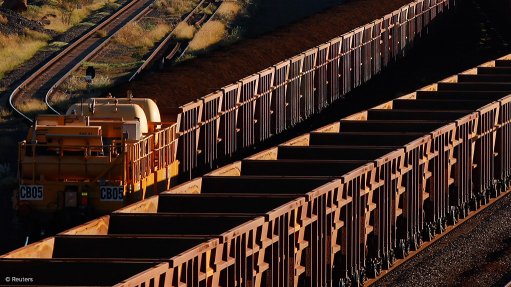How Peru seeks to ensure mining helps local communities
South Africans are displaying increasing interest in the manner in which Peru, another leading mining country, is managing its mining sector and, in particular, ensuring that the industry contributes to the socioeconomic development of the communities and regions in which the mines are located. “Our mining laws also protect the local communities,” reports outgoing Peruvian ambassador Daúl Matute-Mejía. “When a company wants a mining concession, it must consult with the local communities and the regions.”
Peru is a multiparty democracy and republic with separation of powers. There is a 130-seat unicameral National Congress. The executive is composed of a directly elected President, who appoints a Prime Minister and a Cabinet. Judges are appointed by the National Judge Selection and Evaluation Board. There are also a number of ‘autonomous entities’. These are the Constitutional Court, the Central Reserve Bank of Peru, the Super-intendency of Banking and Insurance and Private Pension Fund Management Companies, the National Electoral Board and the Controller General’s Office. The current constitution was adopted in 1993. The country is organised into 25 regions (plus the constitutional province of Callao, which is the main port and is adjacent to Lima, the capital), under which are 203 provincial municipalities and, below them, 1 841 district municipalities. Note that there can be rural as a well as urban municipalities.
Under the Peruvian tax system, all companies pay a 30% corporate income tax. Mining and hydrocarbons companies also pay royalties. Half the income tax paid by mining companies is accounted for by an impost called the ‘canon’ (confusingly, this is usually translated into English as ‘royalty’). There is also a sobrecanon (normally translated as ‘royalty surtax’). The funds collected through the canon and sobrecanon go to the regions and provincial and district municipalities in which mining is taking place. However, the fund transfers are not automatic.
“The money from the canon and sobrecanon is paid into the Banco de la Nación – the national bank – and not directly to the regions or municipalities,” explains Matute-Mejía. “To access the funds, the regions or municipalities must present good projects that will benefit them, whether in infrastructure, such as roads and housing, or services like health and education, for example. A special secretariat in the office of the Prime Minister reviews the proposed projects. When the technocrats approve them, the regions or municipalities get permission to withdraw the money from the Banco de la Nación to fund those specific projects.”
Not all the local authorities have the capacity to develop the kind of projects required to access the funding. Often, as a result, the mining companies pay for specialist consultants to develop specific projects for these communities. These consultants are often experts from the country’s top universities. They evaluate and list the needs of the communities concerned. Each community then decides which of its needs it wants to address first, then second, third and so on.
“The whole system is very well regulated,” assures Matute-Mejía. “Nobody can get money freely. Strict rules and strict enforcement were introduced and enforced as a result of past bitter experience: corruption and nepotism prevented the country from developing. “Now, in Peru, we have had high officials, including two regional presidents and one national President, sent to jail for corruption and misappropriation of funds.”
Peru’s population was 30.38-million last year and the country had a gross domestic product (GDP) of $202.3-billion, a GDP growth rate of 5.8% and an inflation rate of 2.8%. Between 2000 and 2009, the country grew by 4.6%, then by 8.5% in 2010, 6.5% in 2011 and 6% in 2012 (World Bank figures). The country’s GDP growth for this year is forecast to be 4.6%, owing to the euro crisis and the deceleration of the Chinese economy. Private investment in Peru last year is expected to have totalled $45.3-billion and the forecast for this year is $50.4-billion.
Comments
Press Office
Announcements
What's On
Subscribe to improve your user experience...
Option 1 (equivalent of R125 a month):
Receive a weekly copy of Creamer Media's Engineering News & Mining Weekly magazine
(print copy for those in South Africa and e-magazine for those outside of South Africa)
Receive daily email newsletters
Access to full search results
Access archive of magazine back copies
Access to Projects in Progress
Access to ONE Research Report of your choice in PDF format
Option 2 (equivalent of R375 a month):
All benefits from Option 1
PLUS
Access to Creamer Media's Research Channel Africa for ALL Research Reports, in PDF format, on various industrial and mining sectors
including Electricity; Water; Energy Transition; Hydrogen; Roads, Rail and Ports; Coal; Gold; Platinum; Battery Metals; etc.
Already a subscriber?
Forgotten your password?
Receive weekly copy of Creamer Media's Engineering News & Mining Weekly magazine (print copy for those in South Africa and e-magazine for those outside of South Africa)
➕
Recieve daily email newsletters
➕
Access to full search results
➕
Access archive of magazine back copies
➕
Access to Projects in Progress
➕
Access to ONE Research Report of your choice in PDF format
RESEARCH CHANNEL AFRICA
R4500 (equivalent of R375 a month)
SUBSCRIBEAll benefits from Option 1
➕
Access to Creamer Media's Research Channel Africa for ALL Research Reports on various industrial and mining sectors, in PDF format, including on:
Electricity
➕
Water
➕
Energy Transition
➕
Hydrogen
➕
Roads, Rail and Ports
➕
Coal
➕
Gold
➕
Platinum
➕
Battery Metals
➕
etc.
Receive all benefits from Option 1 or Option 2 delivered to numerous people at your company
➕
Multiple User names and Passwords for simultaneous log-ins
➕
Intranet integration access to all in your organisation

















